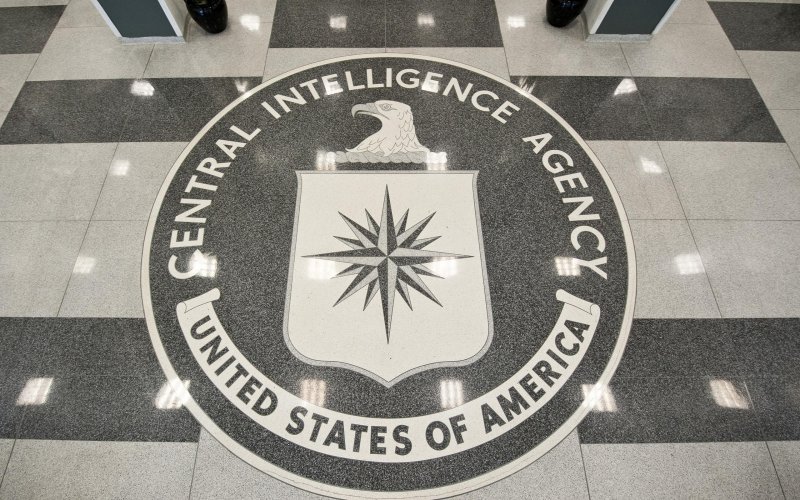By Blake Neff and Michael Bastasch
Over the last few days, the CIA has aggressively pushed the claim that Russia actively meddled in the U.S. presidential election, though that claim has encountered substantial resistance from other intelligence figures.
On an unrelated note, here are some of the CIA’s biggest mistakes and misjudgments in its 69-year history.
The Bay Of Pigs
One of the CIA’s most infamously bungled schemes was its plan to overthrow Fidel Castro’s nascent regime in Cuba with an army of Cuban exiles. The CIA’s hope was that a few thousand men could seize a beachhead in southern Cuba, have thousands of dissatisfied Cubans flock to their cause, and drive Castro from power.
But instead, the CIA suffered a defeat so humiliating the agency was nearly disbanded entirely. According to the CIA’s own analysis, the Bay of Pigs was a cataclysmic intelligence failure from start to finish. It failed to accurately gauge Castro’s surprising military strength, and similarly underestimated Cuban popular support for his government.
Not only that, but the CIA also committed a military force even it knew was grossly inadequate, because Director Allen Dulles simply assumed President John F. Kennedy would commit U.S. soldiers before he would let the operation fail. In fact, Kennedy had no stomach for sending U.S. troops to Cuba, and Dulles’ unjustified assumption resulted in the near-total destruction of exile forces.
The Cuban Missile Crisis
Not satisfied with royally bungling the Cuba situation a single time, the CIA one-upped itself by messing up again and nearly causing a nuclear cataclysm in the process.
Despite the growing ties between Castro’s regime and the USSR, and despite the U.S.’s violent meddling in Cuba just a year before, the CIA heavily downplayed the risk of the Soviets building military bases on Cuba.
In an intelligence estimate produced in January 1962, the CIA said it was “unlikely” the Soviets would seek to build military bases in Cuba any time within the next 20 years. This optimism was repeated in a March estimate, just a few months before the CIA started to notice major Soviet arms shipments to Castro’s regime.
Even in September, just a month before the Cuban Missile Crisis and with the USSR clearly shipping a huge quantity of military supplies, the CIA argued the Soviet presence was purely defensive and the presence of any offensive weaponry was extremely unlikely.
“The establishment on Cuban soil of Soviet nuclear striking forces which could be used against the U.S. would be incompatible with Soviet policy as we presently estimate it,” the report concluded.
Just a month later, the abrupt discovery of completed nuclear missile sites took the U.S. and USSR to the brink of a general nuclear exchange.
The Iranian Revolution
Few events have been more destructive to long-term U.S. interests than the successful overthrow of the U.S.-aligned Iranian shah and his replacement with hostile Islamic fundamentalists. But the CIA was caught entirely off-guard by the revolution. In August 1978, just six months before the shah fled, the CIA issued a report arguing that “Iran is not in a revolutionary or even a pre-revolutionary situation.”
Not only that, despite a general awareness of student and religious agitation against the Shah, the CIA was scaling back its operations in Iran prior to the revolution, in an effort to placate the apparently secure shah. As a result, the shah’s fall came almost out of nowhere, and the U.S. had no resources in place to try to keep him in power or otherwise handle the abrupt transition. Iran has been one of America’s most stalwart enemies ever since, funding terrorist efforts across the Middle East and even threatening to construct nuclear weapons.
Fall of the USSR
The USSR was in a state of severe decay for years before its final implosion. Its economy remained weak throughout much of the 1970s and 1980s. Reform efforts by Mikhail Gorbhachev exposed much of the country’s weaknesses, but instead of bolstering the USSR, he largely hastened its collapse by igniting nationalist, secessionist sentiment throughout the Soviet empire.
But even as the USSR shuddered towards it disintegration, the CIA consistently overestimated its foe’s stability — a mistake that was bluntly admitted by two directors of the agency.
Only in 1989, then-director Robert Gates admitted in 1992, did the CIA even consider the Soviet Union could collapse. Before then, while serving as a top CIA official, Gates had repeatedly produced memos and speeches warning about the USSR’s tremendous strength and economic dynamism.
Stansfield Turner, who led the CIA from 1977 to 1981, was similarly blunt about the agency’s failures. In a paper for Foreign Affairs in late 1991, Turner blasted “revisionist rumblings that the C.I.A. did in fact see the Soviet collapse emerging after all.”
“On this one,” Turner said, “the corporate view missed by a mile.”
The Sept. 11 Attacks
The 9/11 attacks were by far the deadliest terrorist action against the U.S. in history, and kicked off what has now been 15 years of heavy U.S. involvement in the ever-tumultuous Middle East.
But the attacks themselves, which killed nearly 3,000 people, could have been prevented with better CIA intelligence. The CIA was amply aware of the danger posed by al-Qaida leader Osama bin Laden, and had produced reports about his determination to deliver a devastating blow against the U.S. Not only that, but the agency knew by early 2000 that two of the 9/11 hijackers, Khalid al-Mihdhar and Nawaf al-Hazmi, were affiliated with al Qaida. Mihdhar even possessed a valid U.S. travel visa.
Despite this knowledge, the agency failed to let other agencies know that the two men should be kept out of the U.S., and failed to collaborate with the FBI in aggressively pursuing them once they had been allowed to enter the country. The terrorists lived under their own names in the U.S. (Hazmi was even listed in the phone book), and took flight lessons without attracting notice from law enforcement. Only in the last days before 9/11 did the FBI begin actively pursuing the two men, and they were ultimately unable to capture them before they boarded a plane, hijacked it, and crashed it into the Pentagon.
Weapons of Mass Destruction
While the George W. Bush administration had many reasons for wanting to invade Iraq, the strongest reason, and the one pushed the hardest in selling the war to Congress, was Saddam Hussein’s alleged pursuit of weapons of mass destruction. Unsurprisingly, the CIA took the lead in investigating Saddam’s weapons programs and determining whether such weapons were in production.
In 2015, a 95-page National Intelligence Estimate (NIE) regarding Iraq from 2002 was finally released to the public. The report argued that Iraq likely had a chemical weapons program, though it was uncertain about whether Iraq had actually produced any chemical weapon stockpiles. The report was even more unsure about Iraq’s alleged nuclear program, saying the evidence offered no strong support that Iraq was restarting its nuclear weapons program.
As the report made its way up the CIA chain of command and into the White House, its moderate language was pared back, making the case for invasion look stronger than it was. In December 2012, CIA director George Tenet described the NIE as presenting a “slam dunk” case against Iraq.
In the end, no active, substantial program was found in Iraq after the U.S. invasion.
The Arab Spring
Former CIA deputy director Michael Morrell berated intelligence officials for incorrectly predicting the outcome of the “Arab Spring” uprisings that spread throughout the Middle East in 2012.
Morrell said the CIA, and subsequently President Barack Obama’s White House, believed the Arab Spring would undercut al-Qaida; it only served to embolden them and bring about the rise of Islamic State and severe crises in Egypt and Libya.
“We failed,” Morrell wrote in his 2015 book, “because to a large extent we were relying on a handful of strong leaders in the counties of concern to help us understand what was going on in the Arab street.”
“We said we think this is going to undercut al Qaeda; we think this is going to undercut their narrative that it takes violence to bring political change,” Morrell told CNN in 2015. “And that turned out to be wrong.”





2 comments
… [Trackback]
[…] Read More Information here to that Topic: thelibertarianrepublic.com/flashback-cias-top-7-intelligence-blunders/ […]
… [Trackback]
[…] Information to that Topic: thelibertarianrepublic.com/flashback-cias-top-7-intelligence-blunders/ […]